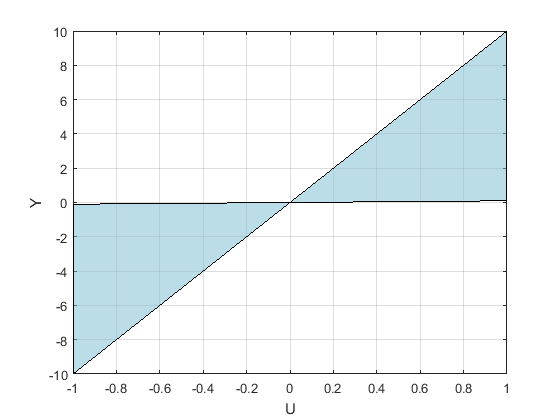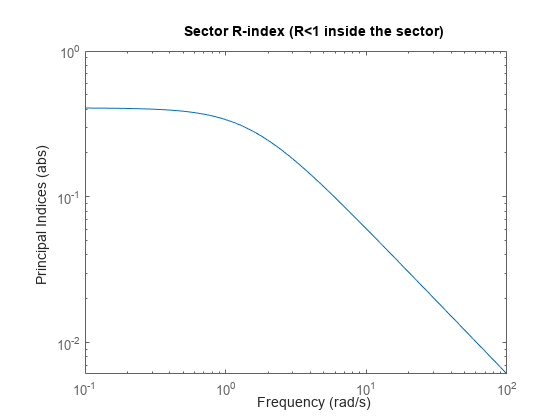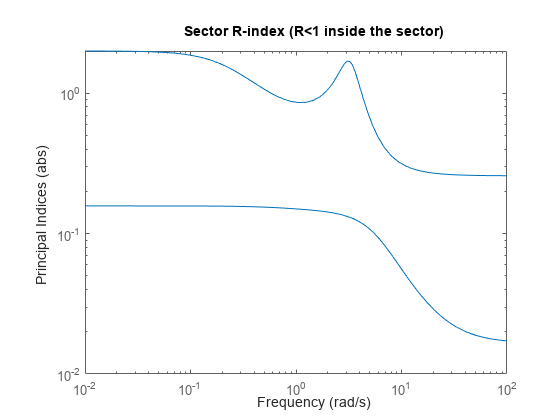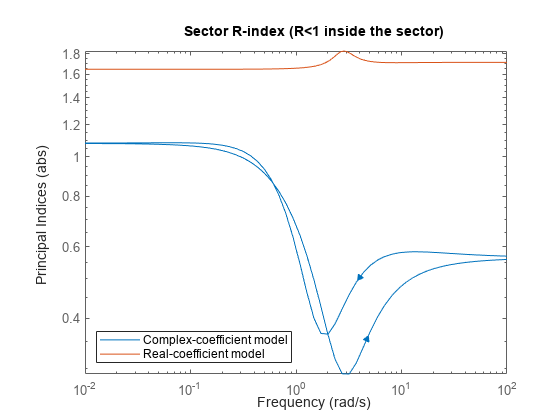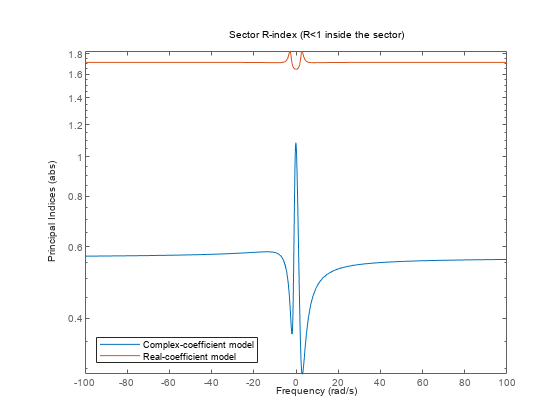sectorplot
Compute or plot sector index as function of frequency
Syntax
Description
sectorplot(
plots the relative sector indices for the dynamic system H,Q)H
and a given sector matrix Q. These indices measure by how
much the sector bound is satisfied (index less than 1) or violated (index
greater than 1) at a given frequency. (See About Sector Bounds and Sector Indices
for more information about the meaning of the sector index.)
sectorplot automatically chooses the frequency range
and number of points based on the dynamics of H.
Let the following be an orthogonal decomposition of the symmetric matrix
Q into its positive and negative parts.
The sector index plot is only meaningful if has a proper stable inverse. In that case, the sector indices are the singular values of:
If H is a model with complex coefficients, then
in:
Log frequency scale, the plot shows two branches, one for positive frequencies and one for negative frequencies. The arrows indicate the direction of increasing frequency values for each branch.
Linear frequency scale, the plot shows a single branch with a symmetric frequency range centered at a frequency value of zero.
sectorplot(___, plots
the sector index for frequencies specified by w)w. You can
specify a frequency range or a vector of frequencies.
You can use this syntax with any of the previous input-argument combinations.
sectorplot(___,
plots the sector index with the options set specified in
plotoptions)plotoptions. You can use these options to customize the
plot appearance using the command line. Settings you specify in
plotoptions override the preference settings in the
MATLAB® session in which you run sectorplot.
Therefore, this syntax is useful when you want to write a script to generate
multiple plots that look the same regardless of the local preferences.
Examples
Input Arguments
Output Arguments
Version History
Introduced in R2016a
